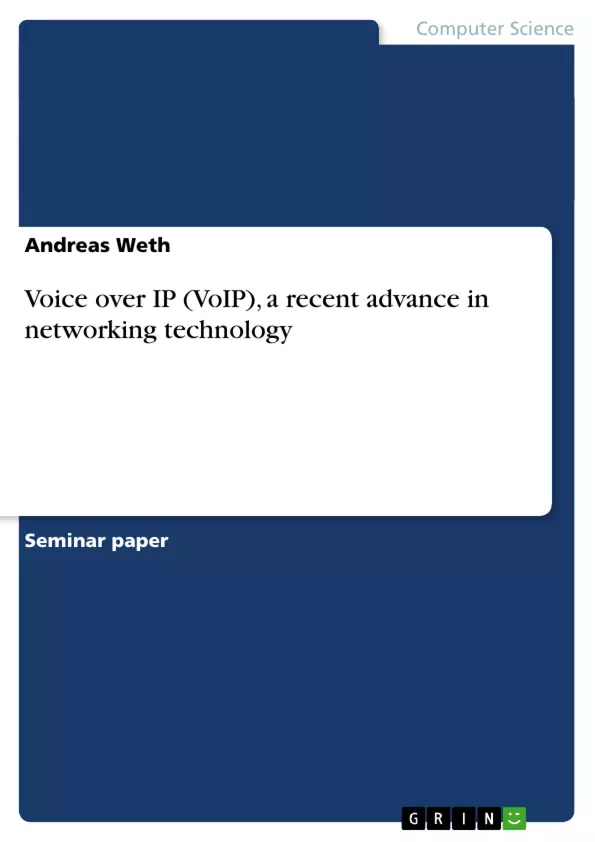Voice over IP (VoIP) is at the moment one of the most discussed topics in the current network scene. Besides the theoretical interest in network development, there is always the practical relevance which is of high importance for advances in network technology. One major proof, that VoIP research and its technology has a high impact on businesses is the fact that VoIP it is already implemented in a number of companies in the United States of America, UK, Ireland and South Korea, according to Cherry (2005). The following graphic shows the importance of VoIP for companies according to a recent international study conducted by Network Computing.
Inhaltsverzeichnis (Table of Contents)
- Introduction and brief overview of Voice over IP
- Integration of Voice over IP in current networks of organisations and in the current networking scene.
- The effect of Voice over IP on the current technology used by organisations
- Critical examination of the benefits of Voice over IP for organisation
Zielsetzung und Themenschwerpunkte (Objectives and Key Themes)
This report aims to provide a comprehensive overview of Voice over IP (VoIP), exploring its integration into current network environments, its impact on existing technologies, and the potential benefits it offers to organisations. It focuses on the transmission of voice over LAN and WAN networks using the TCP/IP protocol suite.
- The evolution and current state of VoIP technology
- The integration of VoIP into existing network infrastructures
- The effects of VoIP on existing technologies within organisations
- The benefits of implementing VoIP for organisations
- The future of VoIP and its potential impact on the networking landscape
Zusammenfassung der Kapitel (Chapter Summaries)
- Introduction and brief overview of Voice over IP: This chapter introduces the concept of VoIP and its growing importance in the network scene, highlighting its practical relevance and current implementation in various companies. The chapter also presents a survey showcasing the prevalence of VoIP adoption and implementation within organizations. It emphasizes the key drivers for VoIP adoption, including flexibility, communication control, and cost reduction.
- Integration of Voice over IP in current networks of organisations and in the current networking scene.: This chapter delves into the integration of VoIP into existing network environments. It discusses the different ways VoIP can be incorporated into current networks and explores the various protocols used for voice transmission over LAN and WAN networks.
- The effect of Voice over IP on the current technology used by organisations: This chapter examines the impact of VoIP on the current technology used by organisations. It investigates how VoIP implementation can influence existing network infrastructure and potentially necessitate changes in existing communication technologies.
- Critical examination of the benefits of Voice over IP for organisation: This chapter critically examines the advantages of implementing VoIP within organisations. It analyzes the potential benefits of VoIP, such as cost savings, increased flexibility, and enhanced communication capabilities, exploring their impact on business operations.
Schlüsselwörter (Keywords)
This report focuses on the key concepts of Voice over IP (VoIP), network integration, protocol standards (TCP/IP, H.323, SIP), and the benefits of VoIP implementation for organisations. It delves into the practical applications of VoIP in modern business settings, exploring its potential for cost reduction, enhanced flexibility, and improved communication efficiency. The report highlights the current adoption trends and future implications of VoIP technology, emphasizing its growing significance in the evolving network landscape.
- Citation du texte
- Andreas Weth (Auteur), 2005, Voice over IP (VoIP), a recent advance in networking technology, Munich, GRIN Verlag, https://www.grin.com/document/41861



